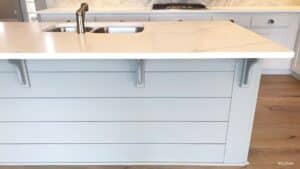Dealing with a clogged shower drain can be a frustrating experience, but removing the shower drain cover to access the problem is often the first step toward a solution. Whether you’re a DIY enthusiast or just trying to save some money on a plumber, this step-by-step guide will walk you through the process of removing a shower drain cover with ease. Get ready to say goodbye to those pesky clogs and hello to a clean, fully-functional shower!
Step 1: Gather Your Tools
Before you start, gather the following tools to make the process easier:
- Screwdriver (Flathead or Phillips, depending on your drain cover type)
- Pliers (Needle-nose or channel-lock pliers may be needed)
- Soft cloth or towel
- Rubber gloves
- Flashlight
- A plastic bag or container for debris
Step 2: Identify Your Drain Cover Type
There are several types of shower drain covers, and the method of removal will depend on the specific design. The most common types include:
- Screw-In: These covers have visible screws that hold them in place.
- Snap-On: These covers simply snap into place and have no visible screws.
- Lift-and-Turn: These covers have a small knob or handle and can be lifted and turned to remove.
- Push-Pull: These covers function like lift-and-turn covers but require pushing and pulling instead.
- Toe-Touch: These covers have a spring-loaded mechanism and can be removed by pushing down and twisting.
Step 3: Remove the Drain Cover
Once you’ve identified the type of drain cover you have, follow the appropriate method below:
- Screw-In: Use a screwdriver to remove the screws, then lift the cover off.
- Snap-On: Slip a flathead screwdriver under the edge of the cover and gently pry it up, working your way around the cover until it’s free.
- Lift-and-Turn: Grasp the knob or handle, lift it slightly, and turn counterclockwise until it comes loose.
- Push-Pull: Push down on the cover, twist it counterclockwise, and then pull it up.
- Toe-Touch: Press down on the cover, twist it counterclockwise, and then lift it up.
Step 4: Clean and Inspect the Drain
With the cover removed, use a flashlight to inspect the drain for any visible debris, hair, or clogs. If you see any blockages, put on your rubber gloves and use your pliers or fingers to carefully remove the debris, placing it in a plastic bag or container.
Step 5: Reinstall the Drain Cover
Once the drain is clear, it’s time to reinstall the cover. Follow the reverse of the removal process for your specific drain cover type. Ensure that it’s properly seated and secure to prevent any water leakage.
Conclusion:
Congratulations! You’ve successfully removed your shower drain cover, cleared any blockages, and reinstalled the cover. This simple process can save you time and money while keeping your shower drain in tip-top shape. Remember to perform periodic inspections and cleanings to prevent future clogs and maintain a properly functioning shower.







